Your cart is currently empty!
Is that crane Chinese or Japanese?

One of the biggest issues in Chinese designs today is their confusion of cultural identity and affiliation, often appropriating the Japanese style motifs as their own.
It became so bad that the Chinese official media regulating government body had to issue a statement that Chinese media creators should not pass off Japanese designs/ culture/ traits as Chinese.
This is a complex issue and the Chinese often use the convenient reason that the Japanese were very influenced by the Chinese in ancient history, therefore the Chinese has the right to claim anything that the Japanese adopted from the Chinese. Nevermind that the Japanese had already moved in their own direction according to their own preferences and cultural expressions, and should be considered as a different style/genre in their own right.
So this post will give an overview of the two cultures and their love for the crane especially in textiles, and coming up will be another one that shows how Chinese Hanfu designers have been appropriating/ inverse-appropriating the Japanese in their designs (omg I need to have a ranting post on mindless appropriations by Asians of our own neighbours and own culture. It’s worse when you do it to yourselves actually because you can’t cite ignorance as an excuse).
Hopefully we will be more discerning the next time someone tries to pass off something Japanese as Chinese!
CRANES IN EAST ASIAN CULTURES

Cranes are a symbol of auspiciousness, of longevity, of divine blessings, and is closely associated with the Taoist deities and their carefree aura which traditional Chinese literati would aspire towards.
There were many discussions in the Chinese Hanfu circle how to differentiate a Japanese crane from a Chinese crane. And while it sounded legit, it is like asking someone how do you distinguish a Japanese from a Chinese person if you ignore their mannerism, make-up, dressing style etc. Essentially, it’s an impossible project simply because it is all very much based on artistic expressions which can be quite fluid and universal in times of great cultural exchanges between the two countries.
Some argued that the Japanese motifs were a lot more stylised, with less details (well you are comparing apples with oranges. You can’t compare a printed motif or a motif meant to be used as a crest or stylised pattern with an emboidery or weaved piece that allows a lot more intricacies to be incorporated);


or that the Japanese crane’s asses are black while the Chinese ones aren’t (??? cranes have white asses, but their black-tip wings tend to cover their asses when not flying, thereby presenting the illusion of a black ass but I don’t think that’s really the difference here. As you can see, the birds can have gold asses too… LOL). IT IS NOT A PICTURE IT IS A DESIGN!!
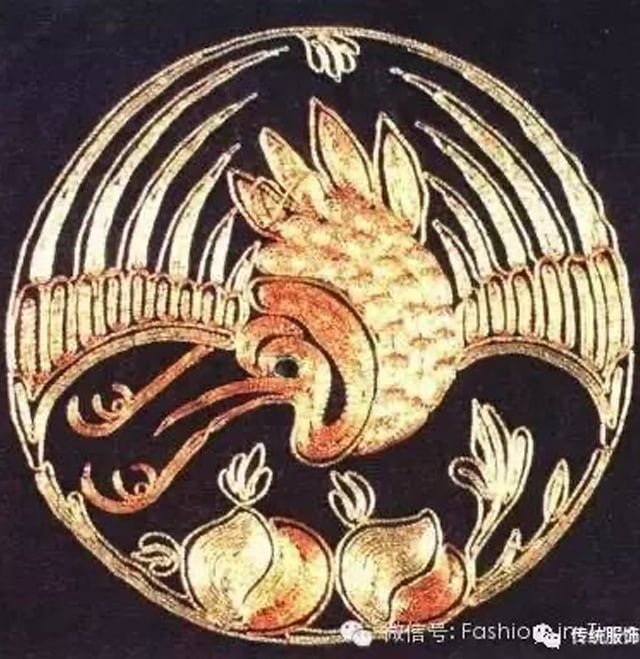
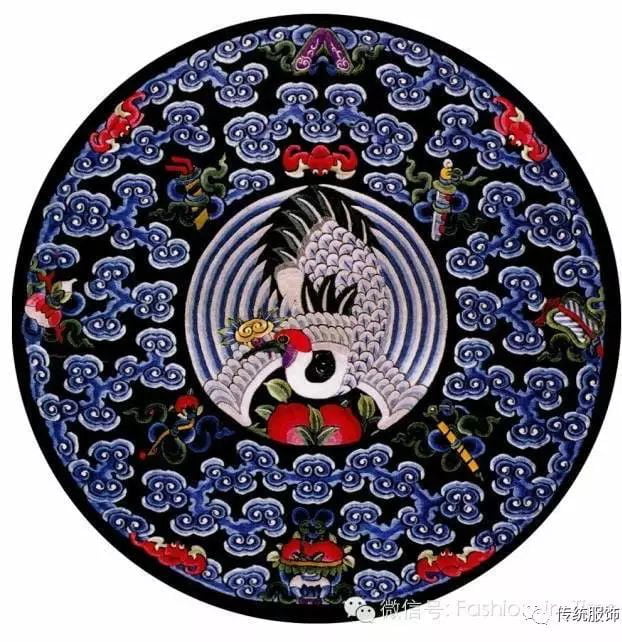
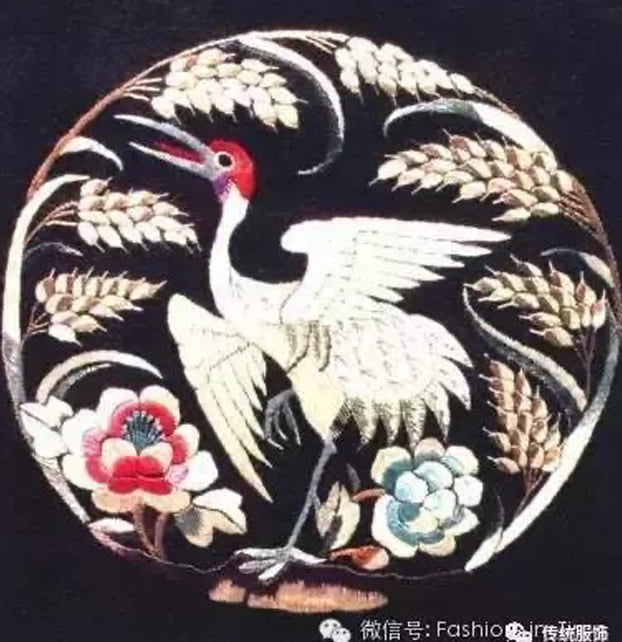
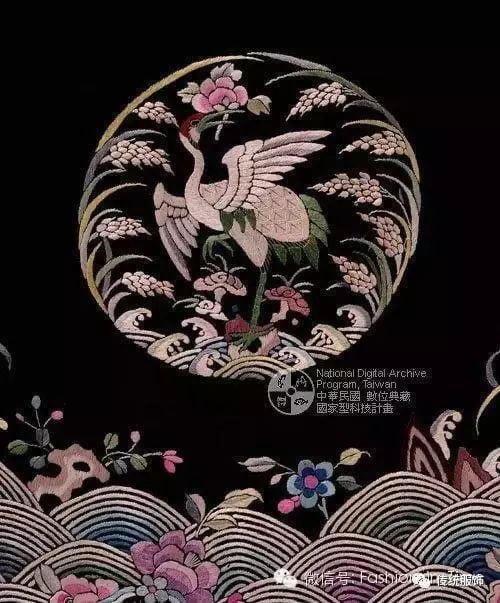
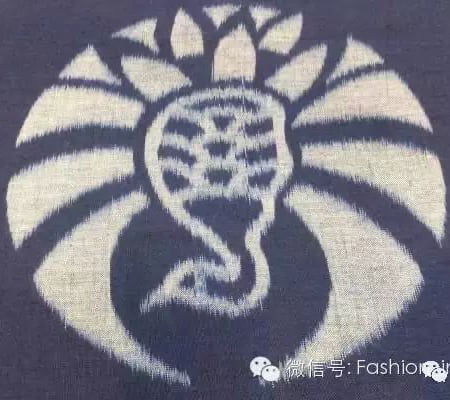
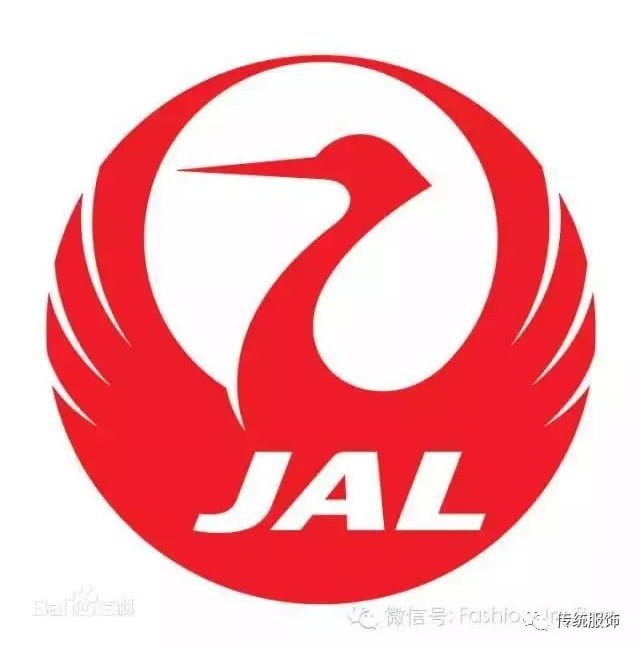
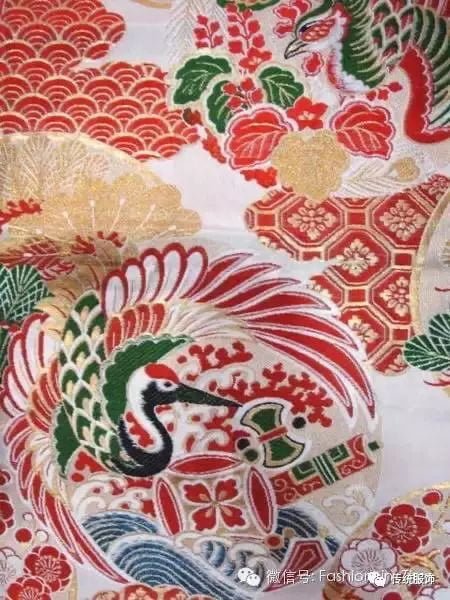
While the round shape crane motifs were hugely popular from around the 16th century onwards in China, and it coincided with the popularity of the Japanese kamon/family crest shape (which apparently inspired the LV monogram design, that is another post coming up soon). So there would be similarity between the ways that a crane can become a round motif (you can only skin a cat can a crane so many times).
I used to mistakenly think that cranes were only for older folks, with the auspicious wishes for longevity. But after doing some readings, I realised that like the Japanese’s use for cranes in their wedding dresses, the Chinese too had such traditions as can be seen in the late 1800s Qing empress’s wedding robe (one of the many).


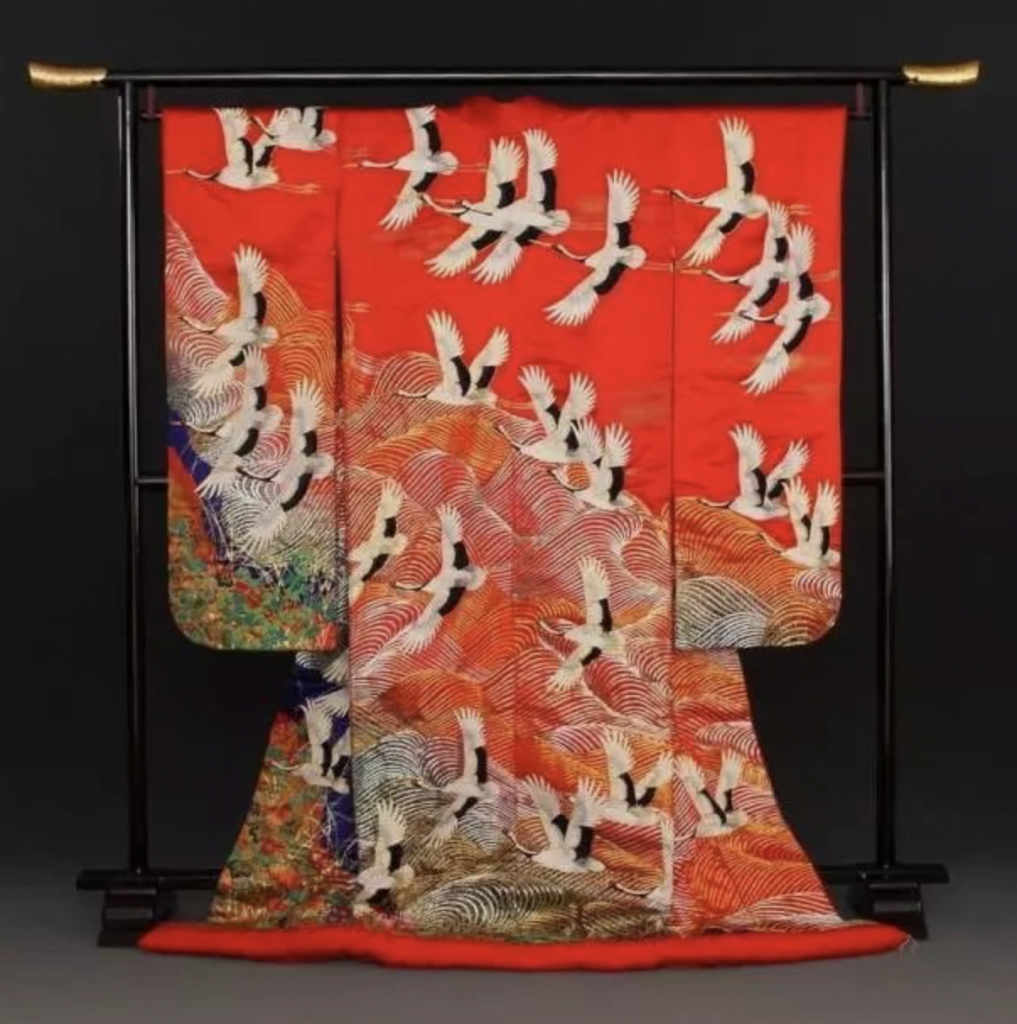
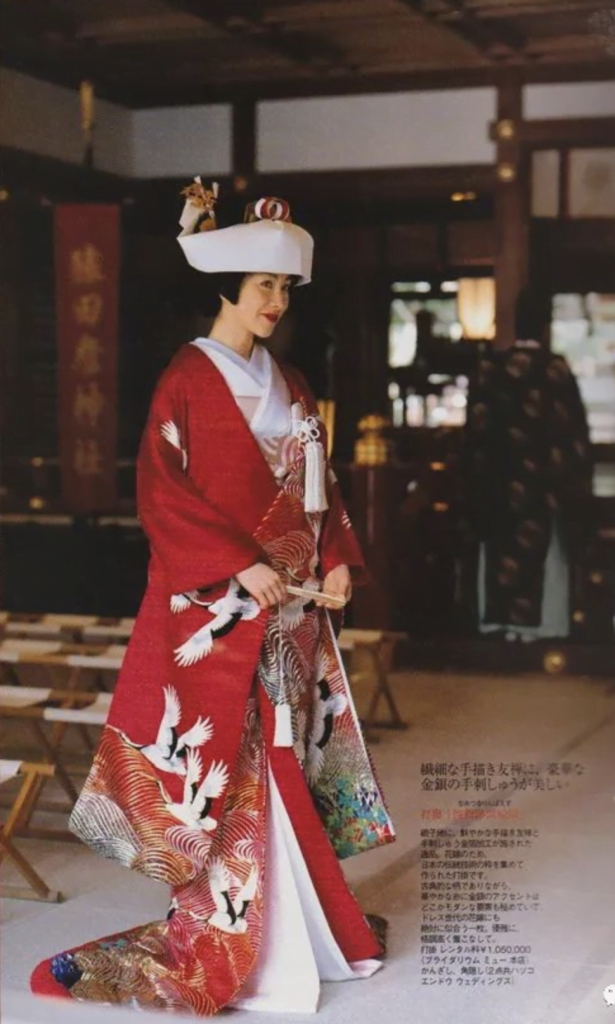
Obviously you can’t really see the crane on the wedding dress of the Manchurian Empress because it’s been incorporated into the repetitive motif that spans across the entire robe, surrounding the dragon-phoenix round motifs (hack: find the white spots and you’d find the crane). In contrast, the Japanese cranes are a lot more visible, a lot more dramatic and eye-catchy and more like part of a painting as opposed to a very formalised and rigid-looking type of motif.
AND
Therein lies the biggest difference–The configurations and layout of the cranes on the entire textile.
THE DIFFERENT WAYS THAT CHINESE AND JAPANESE LAYOUT THEIR CRANE MOTIF ON TEXTILES
Have a look at the way that the Japanese in recent history (i.e. the last 100-200 years) have been laying out the cranes on their kimonos:
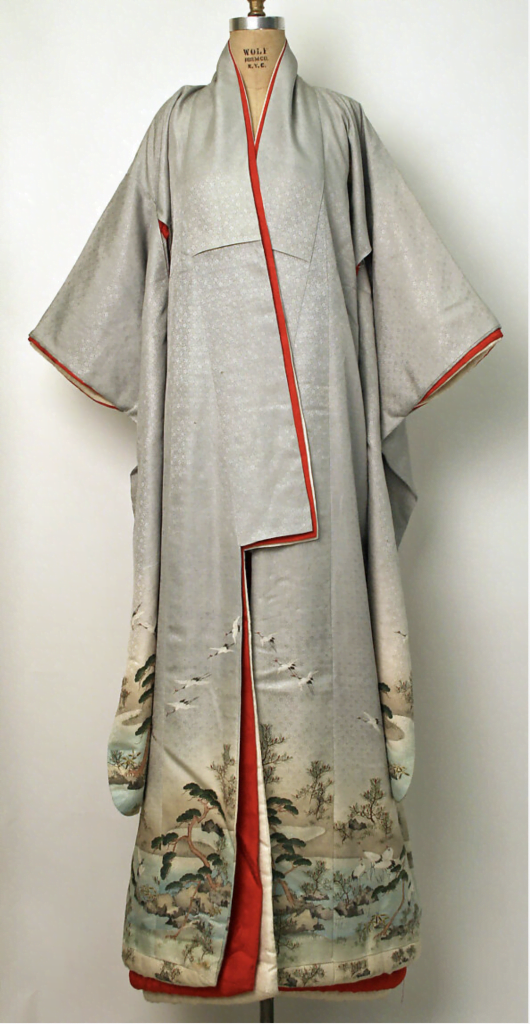
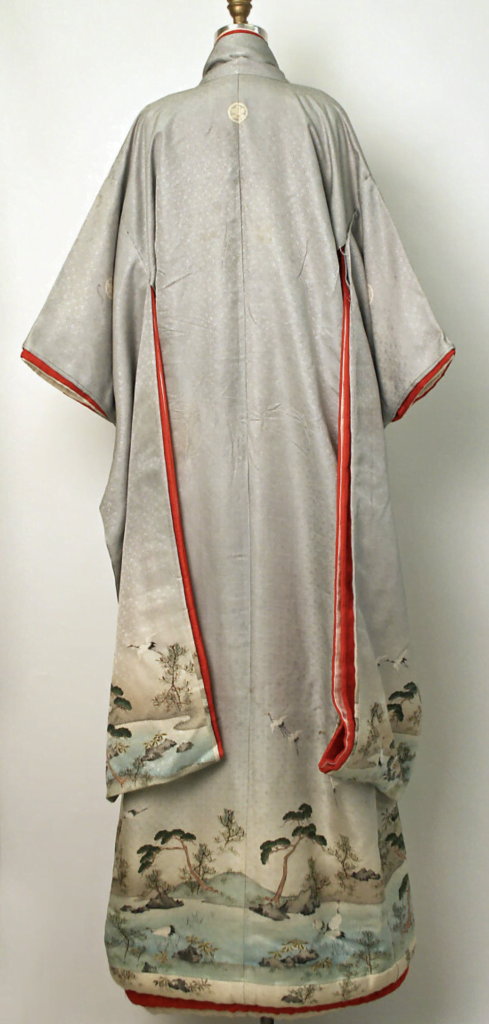

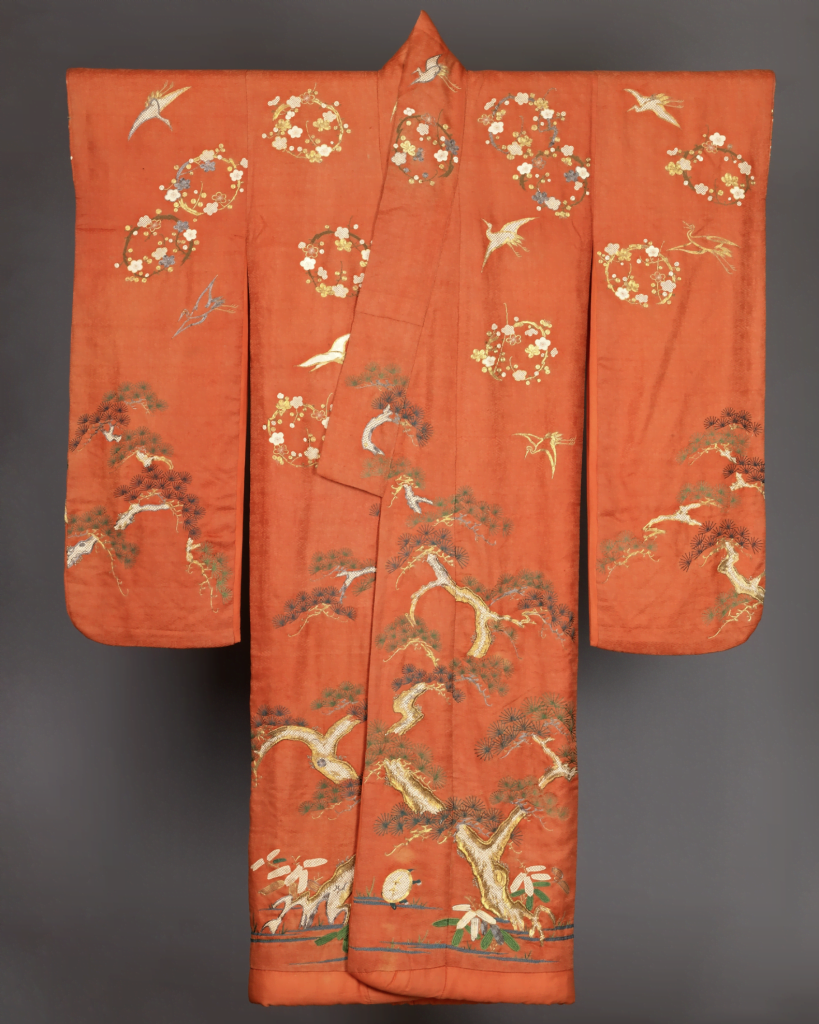
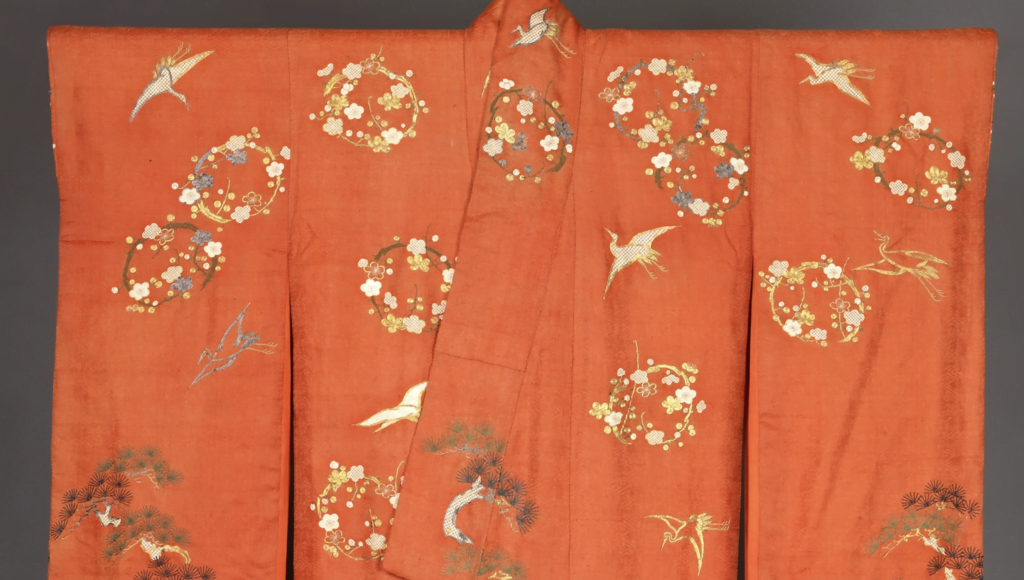
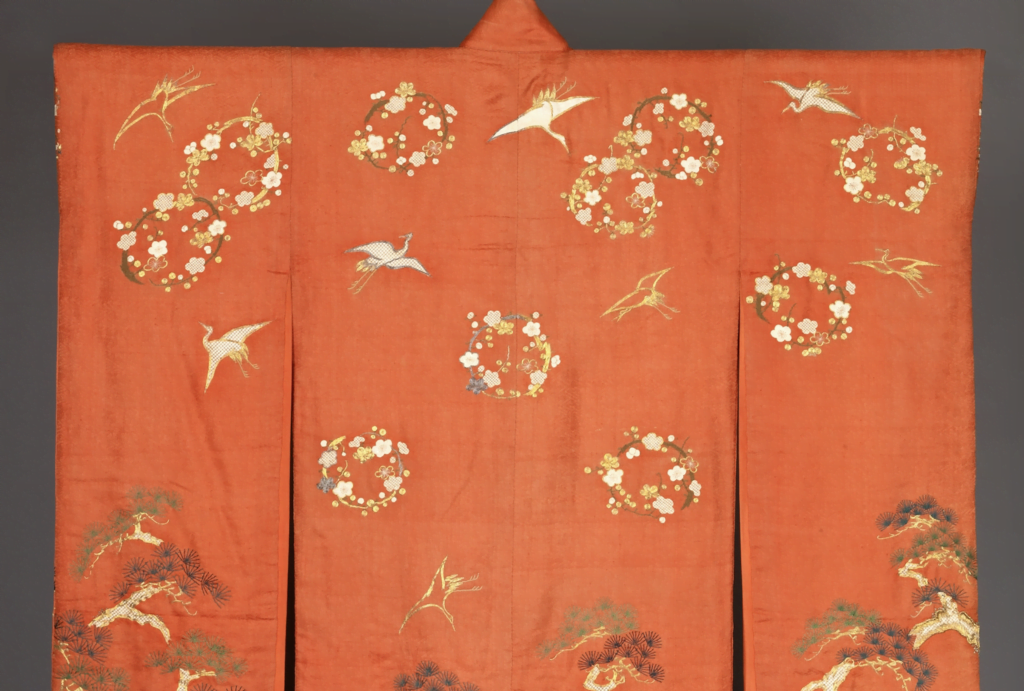

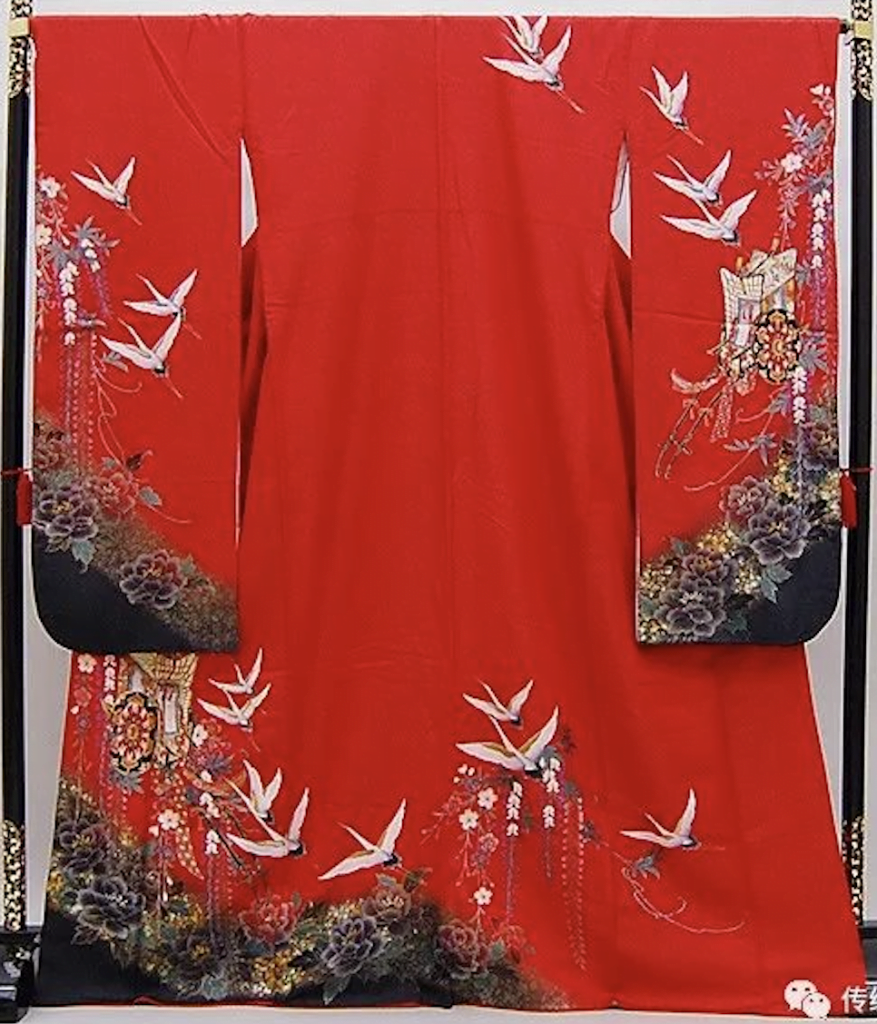
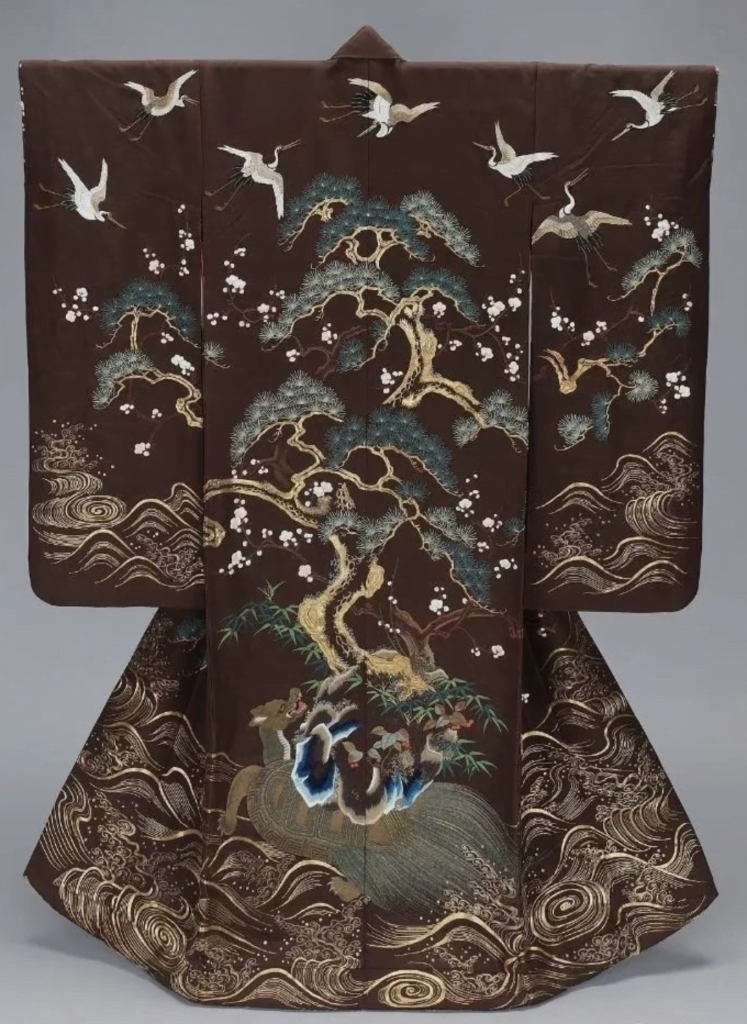
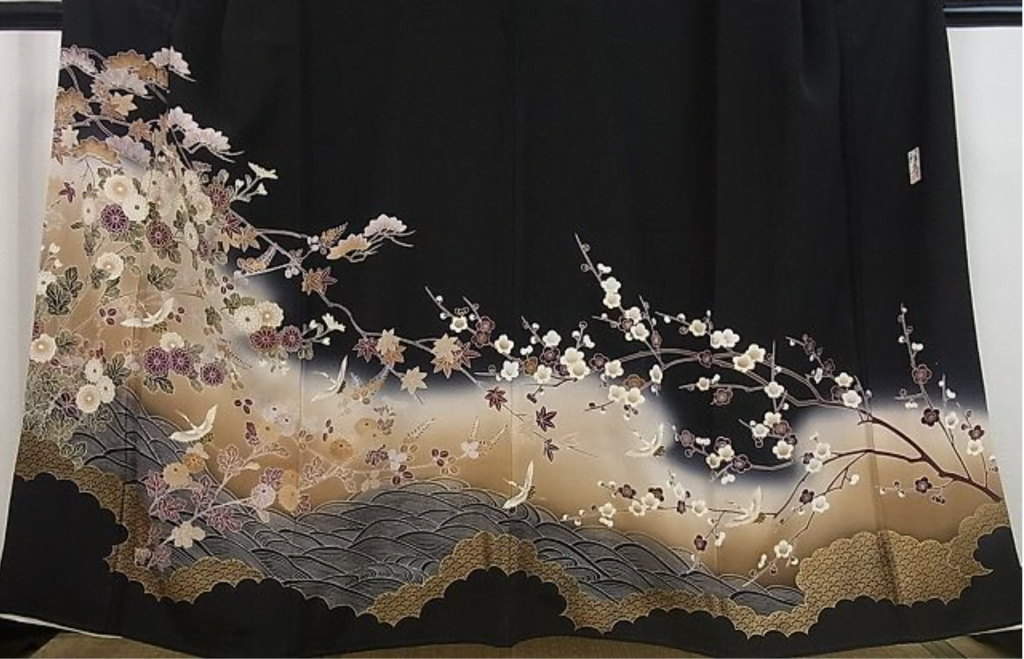
Then compare it to the way that the Chinese have been doing it within a similar timeframe:
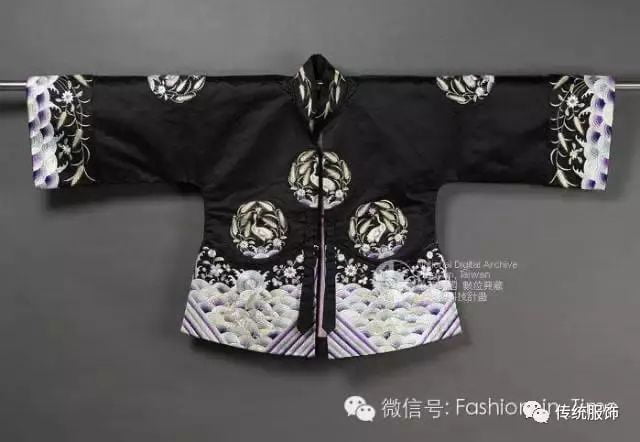
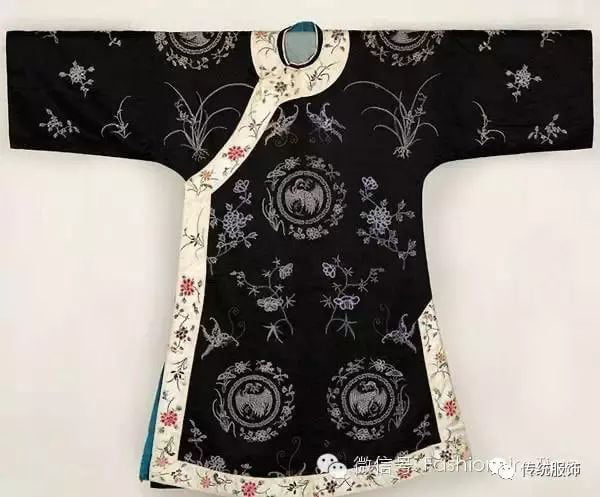
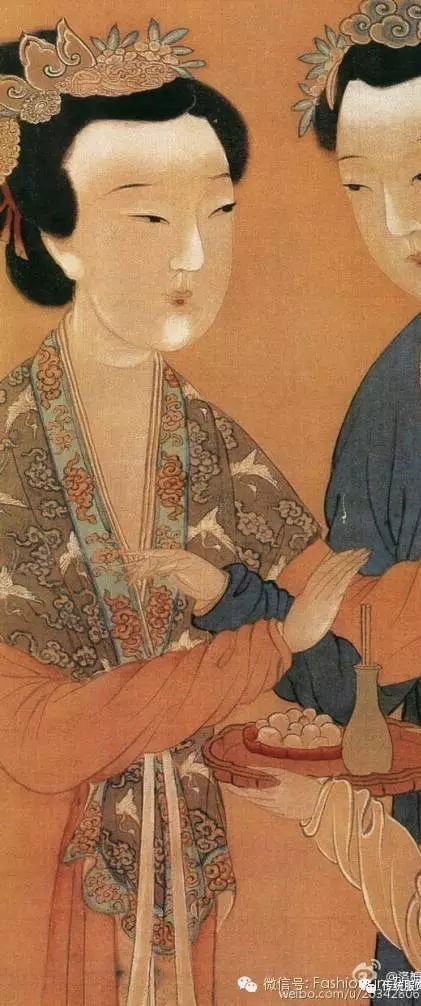

The Japanese obviously favours a lot more asymmetry, picturesque kind of layout whereas the Chinese ones either fills up the entire dress, or in a very formalised, codified, and symmetrical manner.
Sharp-eyed readers will notice that these seem somewhat similar too:




But you can see the two black ones (which are Chinese) have their circles in very specific locations in accordance to the codified dresscode of how motifs and their rounds should be arranged. And they are very symmetrical in layout.
Here’s a curve ball:



There is greater continuity between the Chinese motif across to the sleeves (due to the nature and structure of Chinese sleeves being integrated with the body, and are extremely long) versus the Japanese one which are two long sleeves draping down and thereby cutting the motifs into 3 ‘panels’. So you see the pine tree with branches stretching into the two side sleeves for the Chinese one (middle) and the cranes resting on them, and the waves and pine tree branches being cut off and reemerged mid-air on the bottom of the long furisode sleeves on the left and the right images.
Then there is the komon (small print kimono) and the Chinese repetitive patterns:

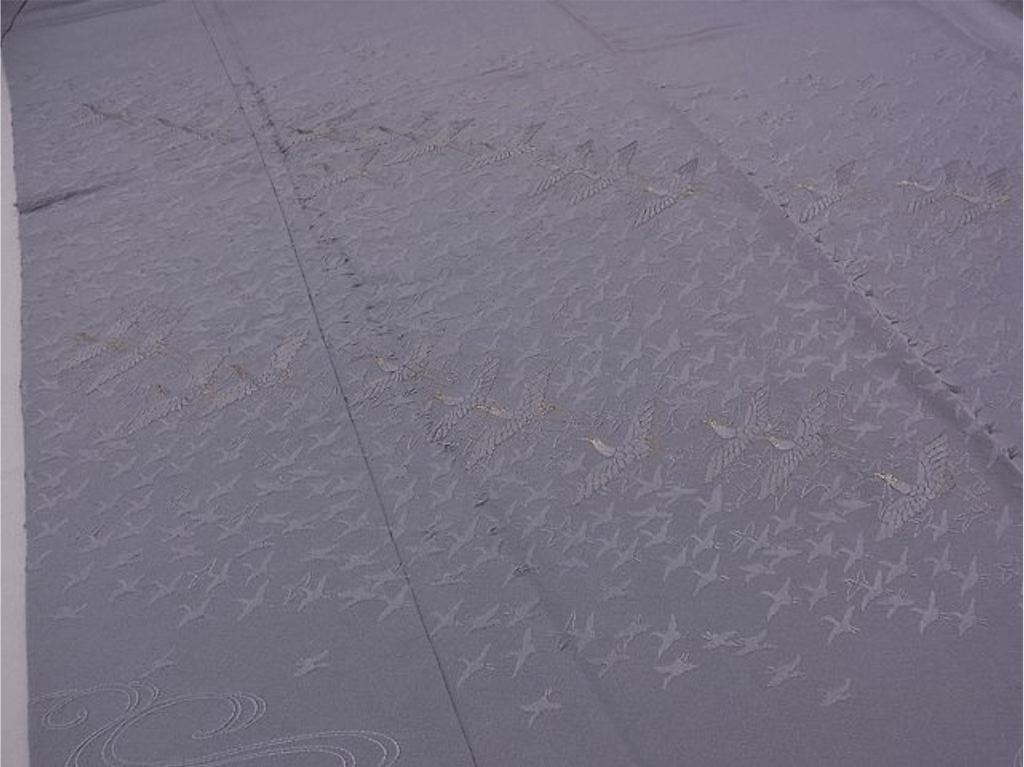
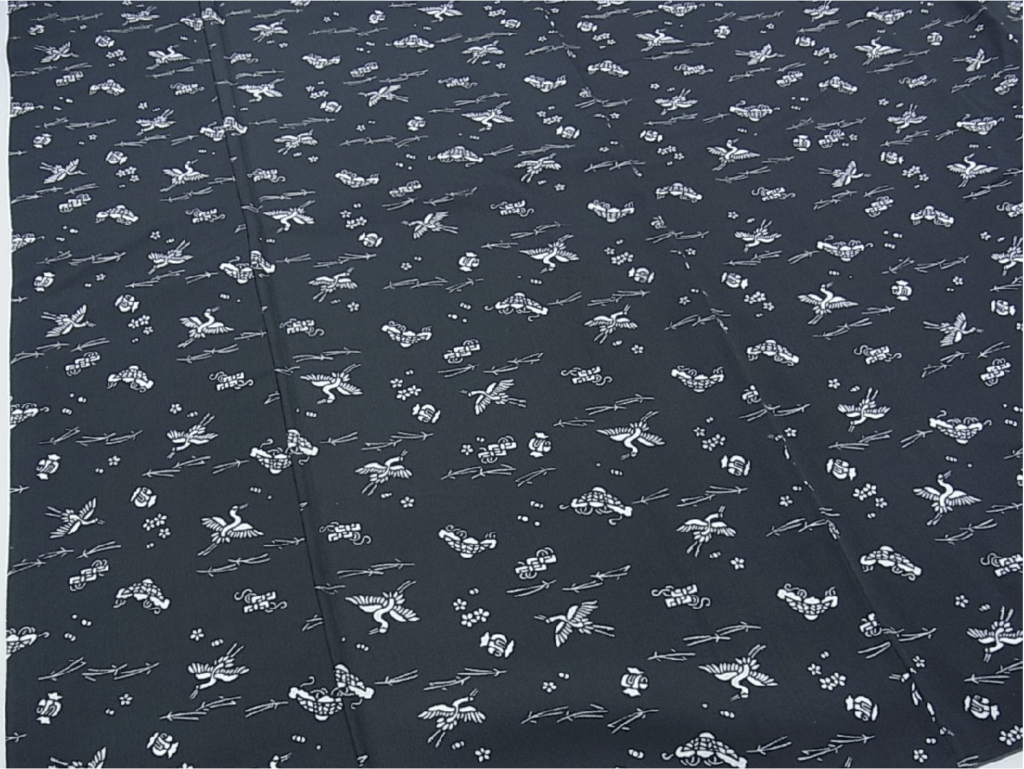
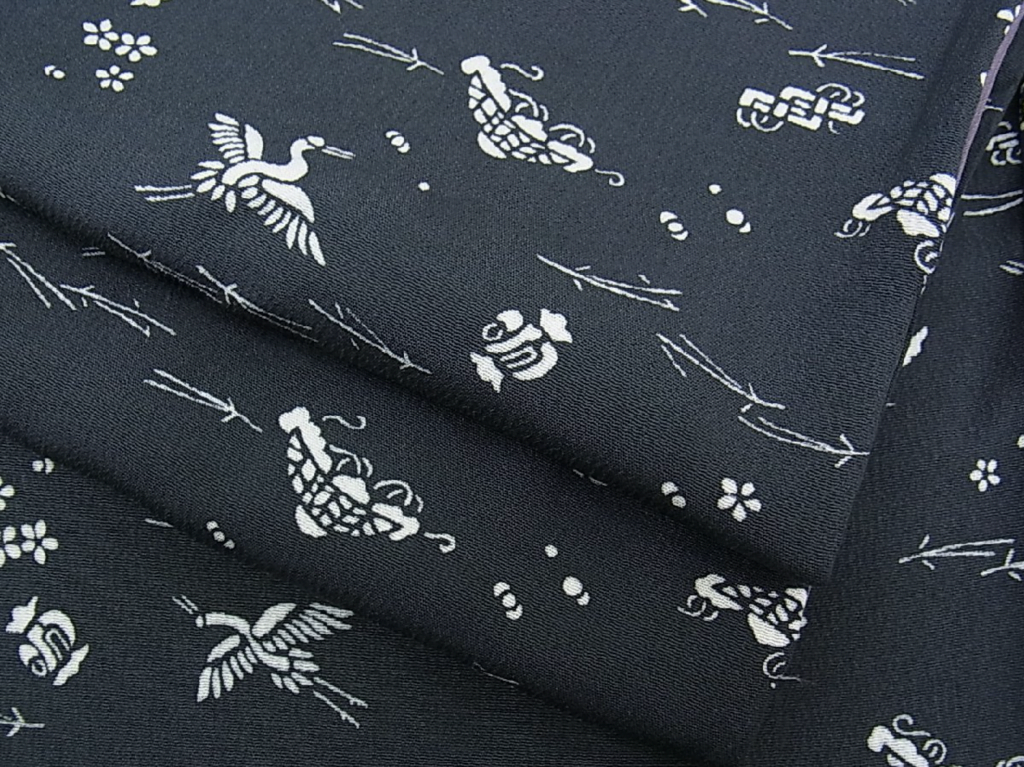
They are generally more repetitive in the crane design. So the same crane in the same position would be repeated across the entire fabric for the Japanese designs (above) with some fillers in between which are hardly of auspicious clouds. The Chinese always have auspicious clouds with the cranes. In fact, the pine with the crane on Chinese motifs are not as popular as the auspicious clouds with crane on Chinese motifs.
Whereas, I do find that pine + crane were much more popular in Japanese ones.
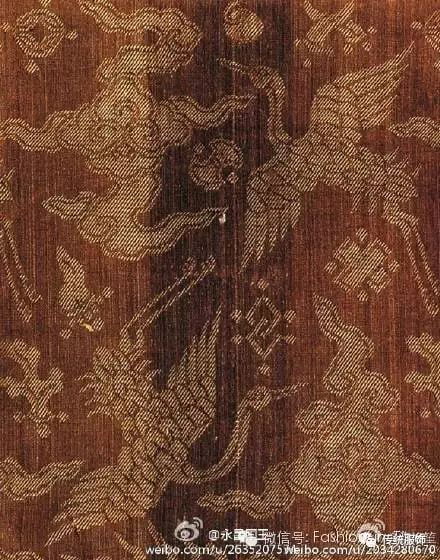
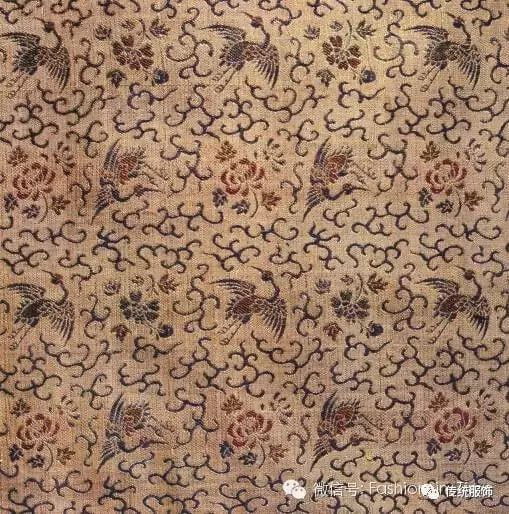
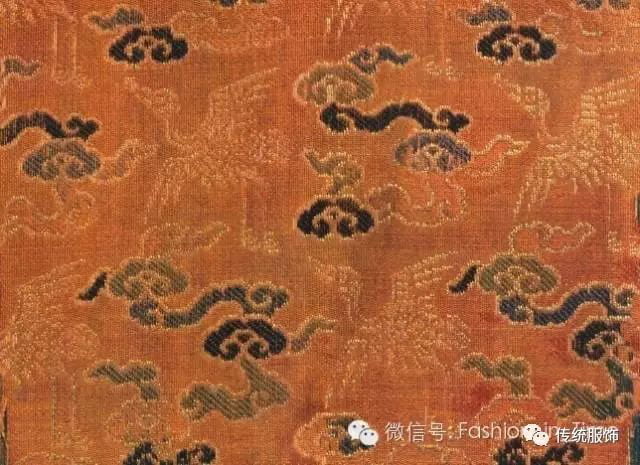
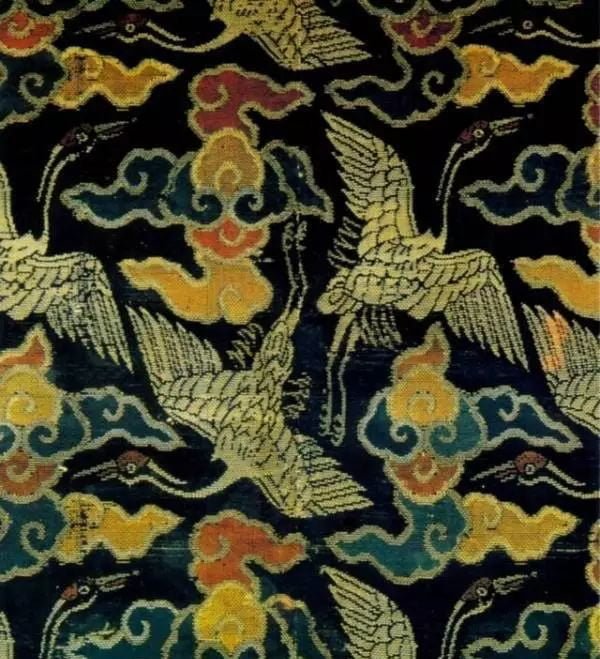
Here’s another curve ball:
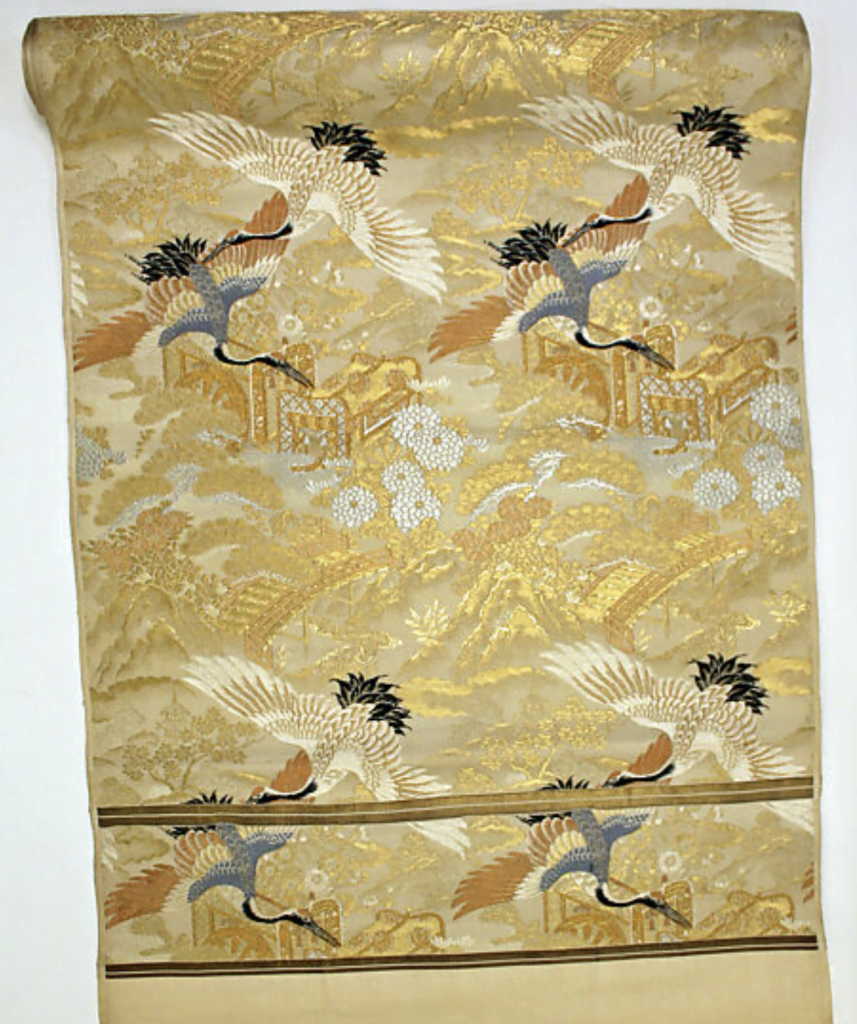
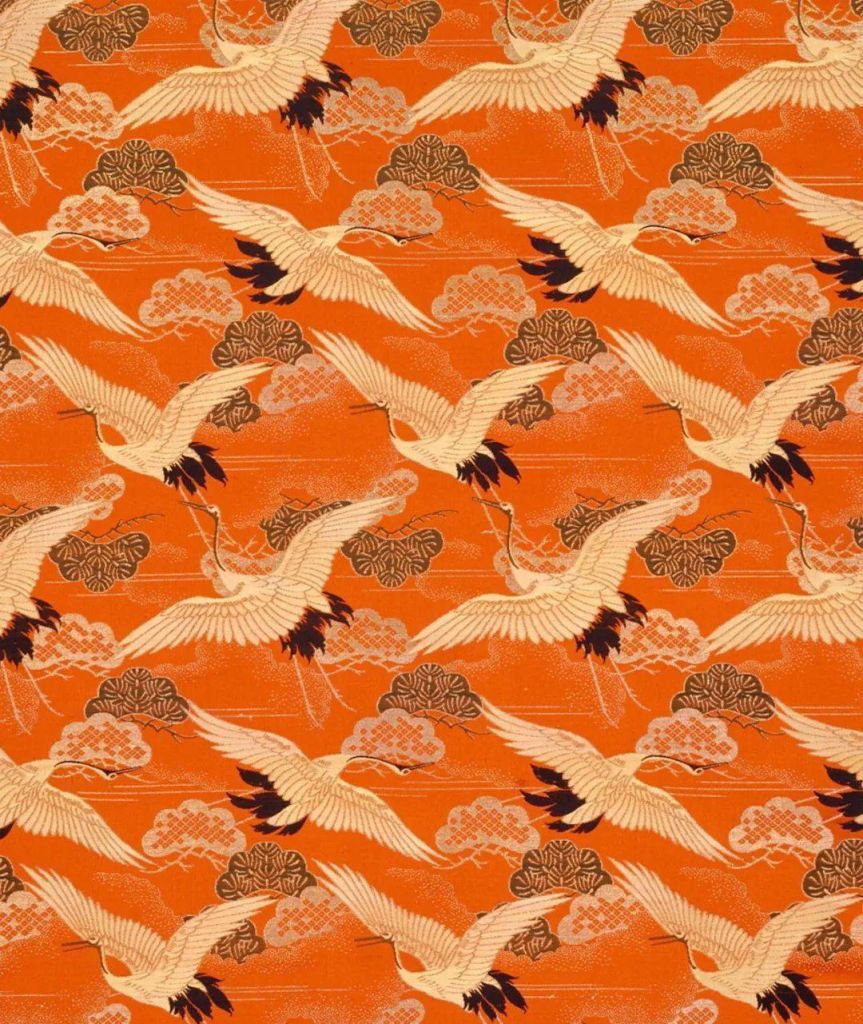
They are so similar except that the Chinese will never have bridges and carriages, things that are so “tangible” and “daily” on their dresses. There’s always this sense of abstract symbolism for Chinese prints and motifs, and it originates possibly from the tradition that being too literal is crass, and the paintings and art have to be conveying certain ideas and emotions than depicting reality as we see them.
CONCLUSION
Not gonna lie, but I love the Japanese’s sense of design and their stylised motifs which are extremely decorative and eye catchy from afar. Definitely much more palatable/attractive for the Western audiences with very strong and contrasting shapes and colours. I also am a lover of asymmetry due to the energy it exudes.
The Chinese, in comparison, are a lot more subtle and evenly spread out, a lot more ‘harmonious’ in the sense of equilibrium.
Different strokes for different folks for sure.
With this understanding in mind, next we would look at the modern Chinese Hanfu designs and motifs and understand how the modern designers infused/appropriated (depends on how you see it) Japanese culture into the Hanfu designs to make it seem more attractive to modern audiences.
Yes, the Japanese culture always has a halo attached to it, even to the Chinese in today’s context.
BESPOKE LEATHER-TEXTILE BAG WORKSHOP
So we’re looking at running a bespoke leather handbag workshop in May (if there’s not enough subscribers then we will postpone to June or later) as a mother-daughter bonding workshop. We’re using this crane motif because of how beautiful the colours are, and also what it symbolises.
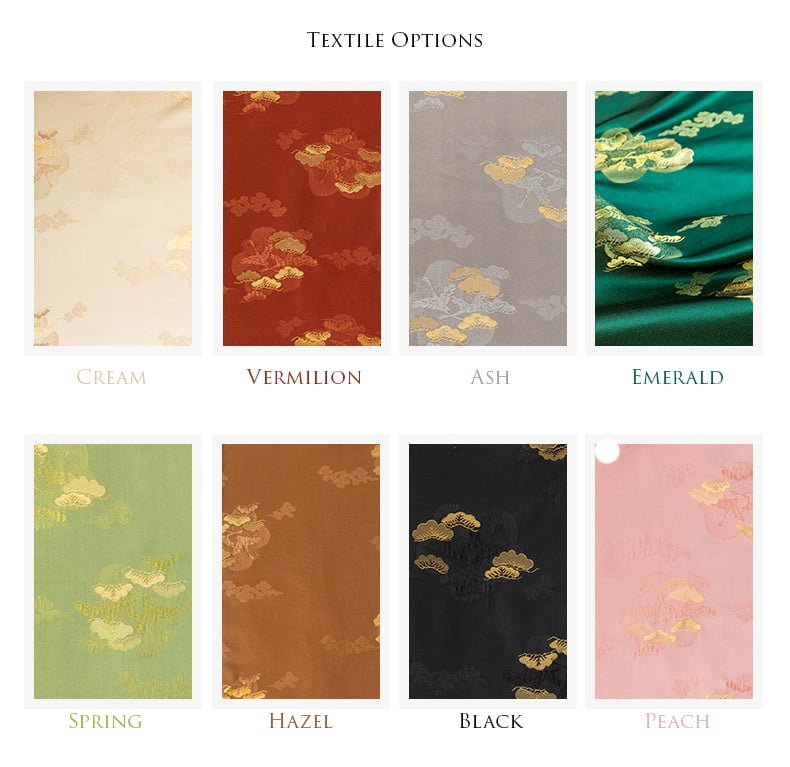
If anyone’s keen, you can indicate your interest in the online form HERE and we’ll be in touch if the workshop is going ahead!

Leave a Reply